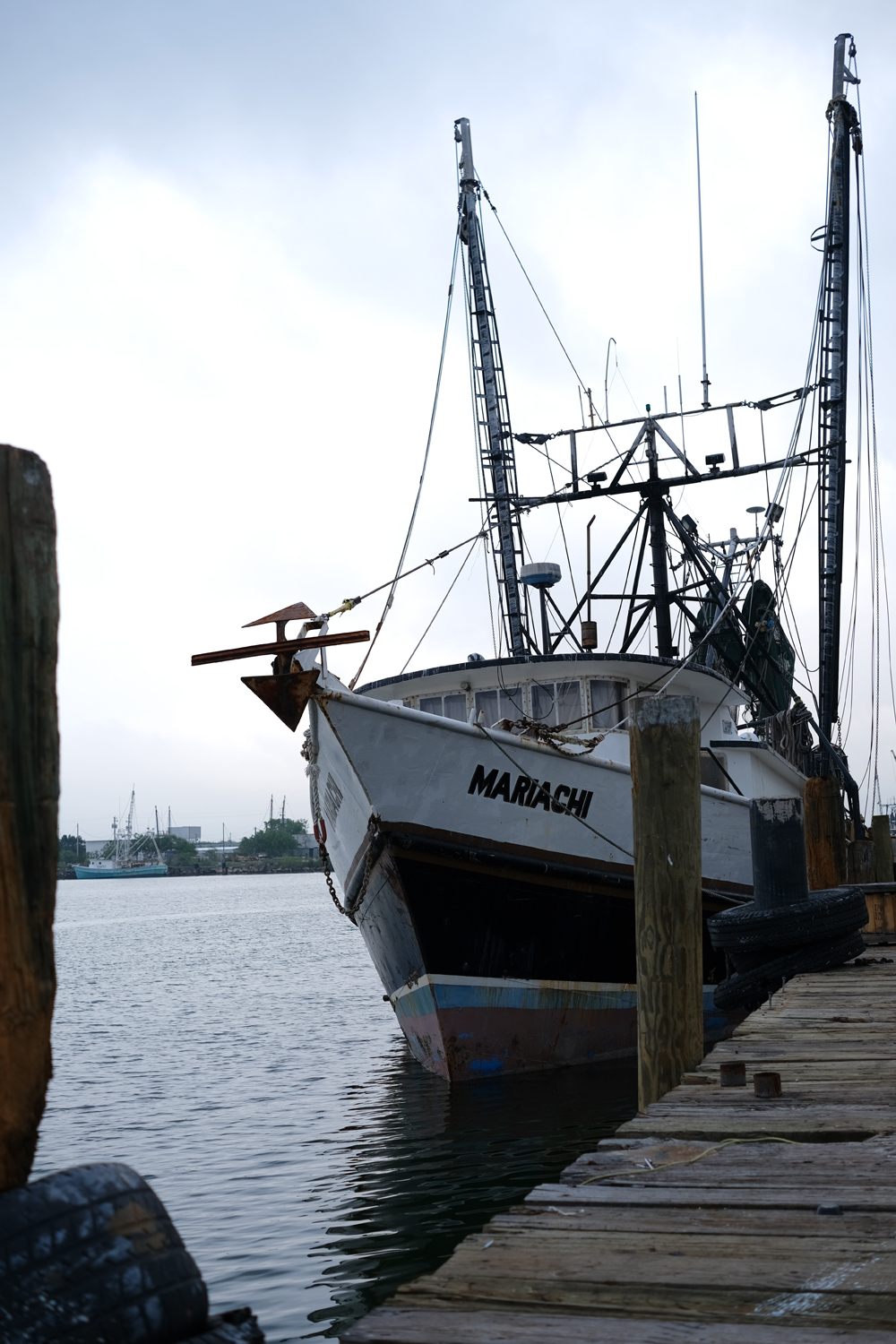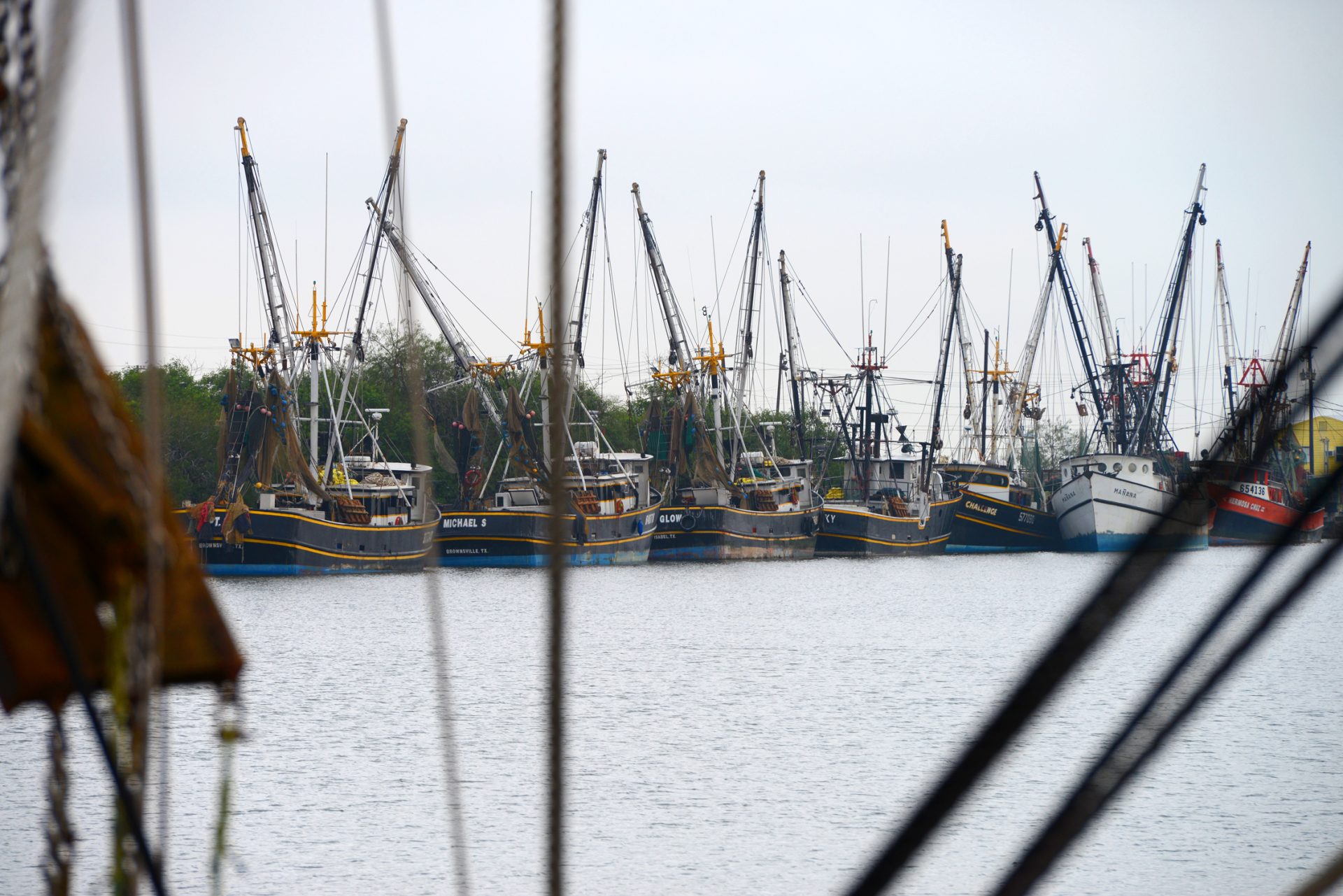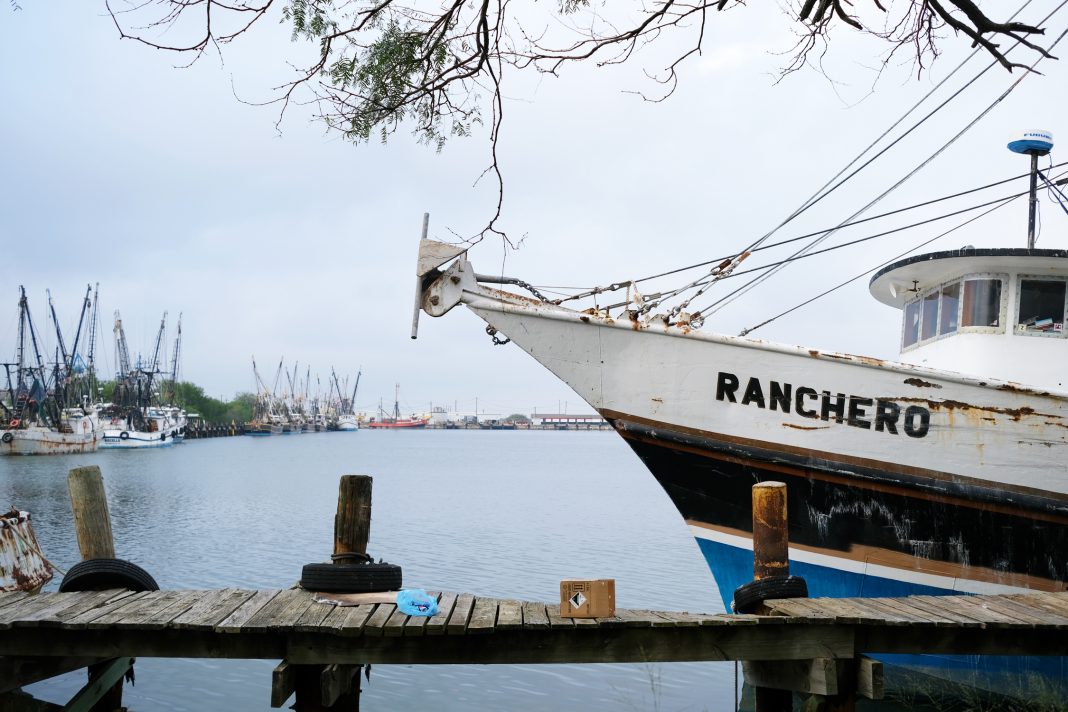The Gulf shrimping industry, including the Brownsville-Port Isabel fleet, shrinking steadily over the last couple of decades, is now in a state of near total collapse thanks to new, unprecedented challenges in addition to the usual.
So says Andrea Hance, executive director of the Texas Shrimp Association, who said she and her husband have put their two shrimp boats up for sale because it’s become impossible to make money fishing for domestic shrimp anymore.
About 95% of the local fleet is tied up, most fleet owners are cutting their crews loose, and just about everybody Hance knows is trying to sell their boats and shrimping licenses, she said.
“I know several people who have already tied up and given up,” Hance said. “We’ve already let go of our crew, which was hard to do after 15 years.”

They kept their two trawlers docked from January to July of this year, unusual since shrimpers normally fish year-round, heading to Louisiana waters when the Texas season closes. But the Hances finally filled their boats with diesel fuel and dispatched them to the Gulf for the seasonal trip, expecting shrimp prices to rise since almost no one was fishing and supplies were low — the old law of supply and demand — but the opposite happened.
“The price of the shrimp dropped,” she said. “We could barely even get a buyer to bid on our shrimp, and that’s scary.”
The high price of diesel is a primary, ongoing drag on the industry.
Shrimpers can’t turn a profit with fuel prices over $3.50 a gallon, and lately they’ve been paying over $4, Hance said, noting that filling up a boat right now costs between $80,000 and $100,000, which she described as “just ridiculous.”
Diesel is less expensive to refine than regular gasoline, though the price hasn’t fallen like gas because diesel is in high demand and more heavily taxed.
Still, as much as fuel prices are a problem, right now that’s not even the main issue, Hance said.
“I was talking to a few buyers and I kept hearing that their freezers are full,” she said. “How are your freezers full if we haven’t been harvesting shrimp?”
Farm-raised, imported shrimp is how. That industry has convinced U.S. buyers to purchase more of it to the point that there’s no more freezer space, Hance said.
It’s the same with all Gulf-state processors, most of which process imported as well as domestic shrimp and sell them alongside each other, she said. Long the bane of domestic shrimpers, cheap imports to the United States are on track to double this year to 2.5 billion pounds — about a billion pounds more than U.S. consumers typically eat each year, she said.

Hance said she’s also heard from buyers that their credit lines are stretched from buying all that imported shrimp to the point that they can’t afford domestic even if they had the freezer space, Hance said, adding that she works with every shrimp organization around the Gulf and that all of them are in a quandary.
“This is a new situation for the industry,” she said. “Those are the two things that we’ve never really had to deal with. The sad thing about that is we don’t really see that going away. … Nobody really knows how to solve this, and we’re kind of scared that it’s not going to get solved.”
Meanwhile, domestic shrimp prices are at rock bottom — though you wouldn’t know it by what retailers are charging compared to imported shrimp, Hance said.
“Our average price for domestic shrimp this year, it dropped to almost the lowest it’s been,” she said. “Let’s just say $3 a pound. This time of year it should be about $7 a pound, so that’s huge. So why is it still $12 a pound at the grocery store? Why is our price so much higher than the imported?”
It may look just as good as locally harvested shrimp, but imported shrimp can contain traces of antibiotics and chemicals — including chemicals banned in the United States — commonly used in foreign shrimp farming, Hance said. The entire Gulf shrimp harvest is about 100 million pounds annually, a drop in the bucket compared to the flood of imported shrimp, and if just 5% of consumers started insisting on Gulf shrimp at stores and restaurants, it could turn things around for the industry, she said.
But for now, no one in their right mind is putting diesel in a shrimp boat much less buying one, though there are plenty on the market, Hance said. While many fleet owners have let their crews go, a few are sending a boat out just often enough to make enough money to keep them on, and losing money in the process, she said.
“It’s depressing, and I feel for these guys,” Hance said. “We kept our captains on for as long as we could. We don’t have deep pockets. We can’t just keep paying these people. That’s what a lot of these guys are having to do. At some point that’s just going to have to stop. How much longer can we do that?”





